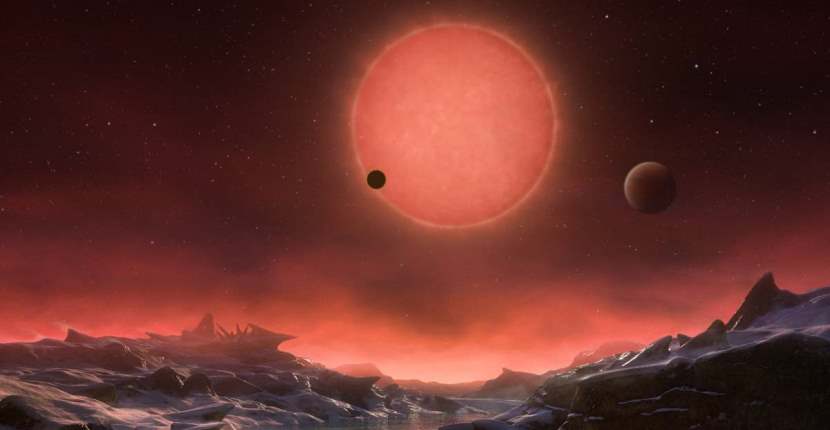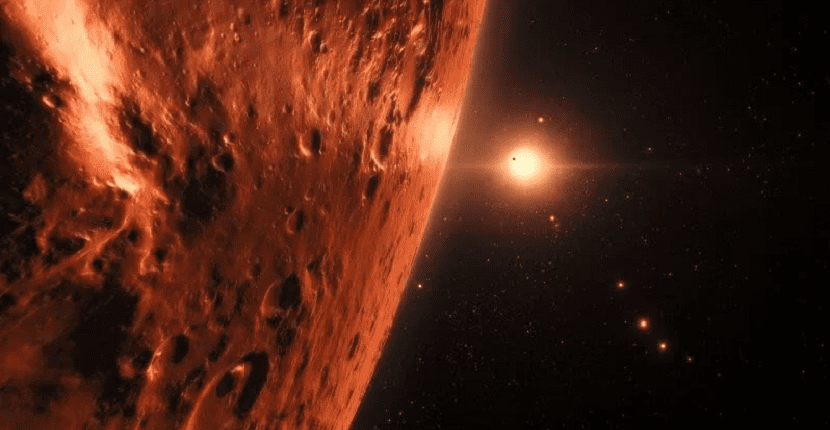
Since at the beginning of 2017 the existence of TRAPPIST-1 Many have been the news that have reached us about the possibility that some form of life could exist in it, due to its morphology, although, shortly after, all these indications, to call them in some way, have gradually been shown that, either they are not sufficiently certain or, after different investigations, they have been demonstrated that they cannot occur.
Even so, today I want to tell you about a new discovery that can be great news. According to different scholars and expert researchers, apparently this solar system located no less than 39 light years from Earth, contains not only planets located in that area where life can exist and have water, but now it has just been discovered that, apparently, one of these planets has a metallic core, a fundamental requirement for the existence of life.

TRAPPIST-1 contains a planet with a dense core, a characteristic that is essential to be able to host life
Among the little that we know about TRAPPIST-1 today, tell you that we are talking about a brown dwarf of type M, a star that would be less luminous than our sun and that, due to this, its habitable zone is much closer to it . According to certain experts, apparently the fact that this life zone is so close to the sun causes several problems to appear so that life can exist as it is coupling tidal, an effect that makes the periods of rotation and translation equivalent, which means that both sides of the planet are permanently exposed to this sun. Another big problem has to do with the proximity of each of these planets with its own sun and the surface temperatures.
Due precisely to these problems, among others, the researchers working on the study and composition of TRAPPIST-1 have decided to focus on what they believe are the two planets that offer the longest life expectancy, TRAPPIST-1d and TRAPPIST-1e. To date, all the studies that are being carried out on these planets are aimed at being able to find out if either of these two planets has a magnetosphere powerful enough to serve as a protective shield against the radiation emitted by the star they orbit, and for this they need to have a dense core.
During the latest research being carried out on the aforementioned planets, a group of astronomers from Columbia University has just determined that TRAPPIST-1e has a dense core probably composed of metallic material very similar, therefore, to the core of the Earth. This core would be the engine of a powerful magnetosphere that would protect the surface of TRAPPIST-1e from the solar flares emitted by the orbiting star.

How can astronomers know with certainty whether or not an exoplanet has an iron core like Earth's at a distance of 39 light years?
For this I would like to mention the words of astronomers Gabrielle Englemenn-Swiss y David kipping:
If you know the mass and radius of a planet very precisely, as with the TRAPPIST-1 system, you can compare that data with theoretical models of interior structure. The problem is that those models generally consist of four possible layers: an iron core, a silicate mantle, a water layer, and a light volatile envelope. Earth has only the first two, its atmosphere does not contribute significantly to mass or radius. In other words, we have four unknowns and only two known variables. In principle, it is an unsolvable problem.
Instead we choose another way to calculate it. We start from the fact that given the mass and radius, there cannot be models with nuclei smaller than X that explain the observed mass and radius. The nucleus can be bigger than X, but at least it has to be X, since no theoretical model can explain it otherwise. That variable X corresponds to what we could call the fraction of the central minimum radius. So we play that same game to find out the maximum limit.